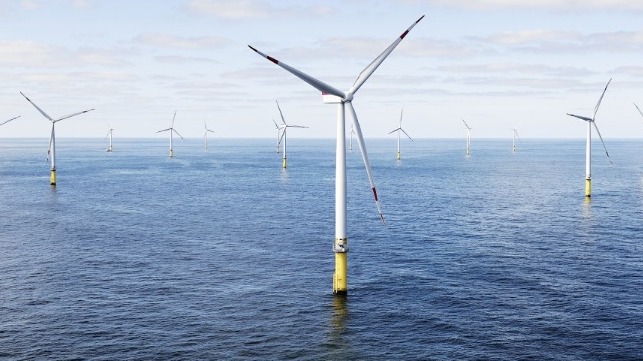NOAA and Ørsted Agree to Share Data on Wind Lease Areas

NOAA has reached an agreement with leading offshore wind developer Ørsted to share physical and biological data from Ørsted's U.S. offshore lease areas. The memorandum is the first of its kind between an offshore wind developer and NOAA, and the agency says that it paves the way for similar data-sharing agreements with other developers.
“This partnership with industry will deliver data Americans use for business, science, and education, while at the same time mitigating effects of climate change,” said Ben Friedman, NOAA's acting administrator. “Our ocean, coastal, and Great Lakes resources are critical to national security and well-being, and NOAA is pleased to work with willing partners to understand and maximize the potential of these national assets.”
NOAA expects that Ørsted’s data will fill gaps in the knowledge base about these areas, particularly in ocean mapping and observing. The data will also contribute to NOAA's missions in the areas of climate adaptation and mitigation, weather-readiness and resilient coastal communities.
"Climate change is a reality, and we are proud to work with NOAA to provide crucial information and to demonstrate how our industry can be stewards of our oceans while providing American individuals and businesses with clean, renewable energy," said David Hardy, CEO Ørsted Offshore North America.
The data will cover air quality, water quality, and emissions; biological communities; meteorology; ocean currents, circulation, and waves; hydrographic services and mapping; and physical oceanography. NOAA will also share its publicly available data with Ørsted.
The partnership is one element of a wide range of offshore wind initiatives that the Biden administration announced at the end of March. The administration laid out an official target for the development of 30 GW of offshore wind capacity in U.S. waters by 2030, and it pledged whole-of-government support for the new industry. 30 GW of power would be sufficient to displace about 80 million tonnes of CO2 emissions per year, according to the administration.
The White House says that meeting its target would trigger $12 billion per year in capital investment, creating more than 40,000 direct jobs and supporting another 30,000 jobs through new economic activity.
